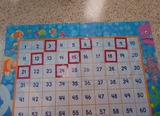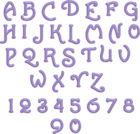
In Unit 2, students will build on their work on multi-digit multiplication and division from Grade 4 as well as their understanding of the structure of the base-ten system in Unit 1 to finalize fluency with multi-digit multiplication and extend multi-digit division to include two-digit divisors.
In Grade 4, students attained fluency with multi-digit addition and subtraction (4.NBT.4), a necessary skill for computing sums and differences in the standard algorithm for multiplication and division, respectively. Students also multiplied a whole number of up to four digits by a one-digit whole number, as well as two two-digit numbers (4.NBT.5). By the end of Grade 4, students can compute those products using the standard algorithm, but “reason repeatedly about the connection between math drawings and written numerical work, help[ing] them come to see multiplication and division algorithms as abbreviations or summaries of their reasoning about quantities” (Progressions for the CCSSM, “Number and Operation in Base Ten, K-5", p. 14). Students also find whole-number quotients and remainders with up to four-digit dividends and one-digit divisors (4.NBT.6). Similar to multiplication, by the end of Grade 4, students can compute these quotients using the standard algorithm alongside other strategies and representations so that the algorithms are meaningful rather than rote.
Unit 2 of Grade 5 begins with writing, evaluating, and interpreting simple numerical expressions (5.OA.1, 5.OA.2). This serves both to review basic multiplication and division facts, which supports major content later on in the unit, and as a way to record calculations that will grow increasingly complex as the unit progresses. Then, students solidify the standard algorithm for multiplication with the computational cases from Grade 4 before extending its use to larger and larger factors (5.NBT.5). Next, students follow a similar progression with division, first computing quotients involving cases from Grade 4 using a variety of strategies and then extending those methods to computations involving two-digit divisors. Note, however, that unlike multiplication, fluency with the standard division algorithm is not expected until Grade 6 (6.NS.2). Throughout the unit, students “learn to use [the] structure [of base-ten numbers] and the properties of operations to reduce computing a multi-digit…product or quotient to a collection of single-digit computations in different base-ten units” (MP.7) (Progressions for the CCSSM, “Number and Operation in Base Ten, K-5", p. 4). Further, “repeated reasoning (MP.8) that draws on the uniformity of the base-ten system is a part of this process” (Progressions for the CCSSM, “Number and Operation in Base Ten, K-5", p. 4).
- Subject:
- Mathematics
- Material Type:
- Assessment
- Homework/Assignment
- Lesson Plan
- Unit of Study
- Provider:
- Match Fishtank
- Date Added:
- 01/01/2017






